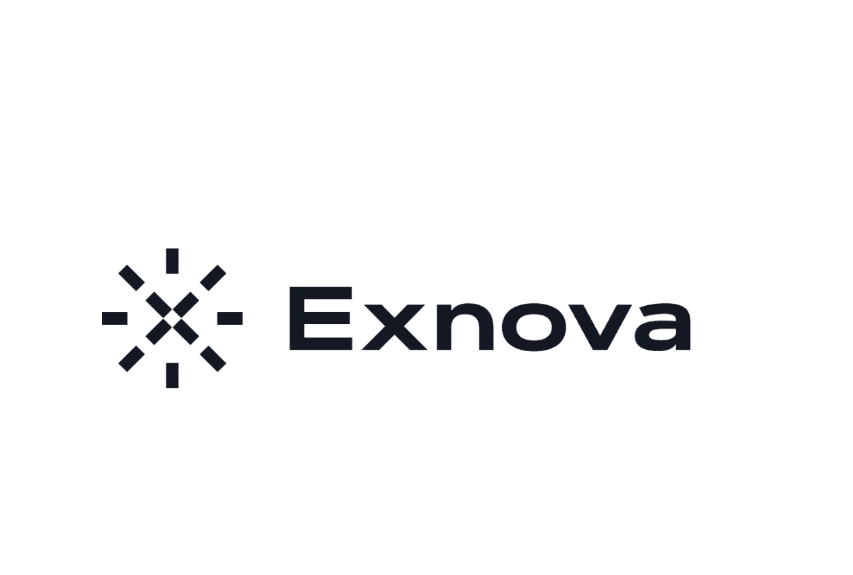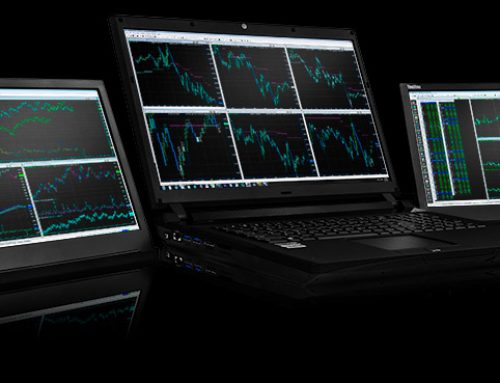Daily trading with CFDs is a popular strategy. The leverage and costs of CFD trading make it a suitable option for active traders and intraday traders. This page provides an introductory guide and tips and strategies for using CFD. We also list the best CFD brokers in 2020.
What is CFD?
A CFD is a contract between two parties. They agree to pay the difference between the opening and closing price of a particular market or asset. So, it is a way to speculate on price movements without owning the actual asset.
The performance of a CFD reflects the underlying asset. A profit or loss is established when the value of the underlying asset moves with respect to the position of the opening price.
When you trade CFDs with a broker, you do not own the asset being traded. You are guessing the price movement up or down.
CFD example
An example is available. You select a stock with a request price of $25 and open a CFD at 100 shares.
If the purchase is shared in the traditional way, the cost is $2,500. There may also be fees or transaction costs.
However, CFD brokers often only require a 5% margin. This you can get into the same deal but for only $125. (Actual level of leverage or margin may vary). This is an attractive hunting ground for week traders. The higher risk and reward ratio makes short-term trading more practical.
When you enter CFD, you will see a loss equal to the size of the spread. This means that if your broker’s spread is 5 cents, you should value your stock at least 5 cents to break even.
CFD vs stock
Using the example above: Let’s assume the price of the underlying stock continues to rise, reaching a bid price of $26.00.
If you own the stock, your holding value is $2600. Ignoring fees or trading costs, traders can realize $100.
However, a CFD with an underlying stock of $26.00 would show the same $100 profit, but cost $125 to open. So, in terms of percentages, CFDs have returned much larger returns. If the market had moved the other way, the loss relative to the investment would have been greater, increasing both the risk and the reward.
Of course, owning an asset instead of guessing at its price has other benefits. Also, I’ve ignored commissions and spreads for clarity. However, the above describes the relative differences between the two investment methods.
Application
Since this is a day trade, you will not hold CFD positions overnight. Instead, you can trade many CFDs in one day. You’ll want to focus on liquid volatility markets to maximize your returns. For example, CFD trading with oil, bitcoin and forex are all popular options.
CFD benefits
You may already have some of the above advantages from CFD, but let’s break it down and add a few more.
- Leverage – CFD leverage is much higher than traditional trading. You can get a minimum margin requirement of 2%. Rates are usually dependent on the underlying asset. Shares or volatile cryptocurrencies, for example, can reach up to 20%. Low margins allow you to take large positions with little capital, but your losses will also take a bigger hit.
- Accessibility – The best CFD brokers can trade in all major markets. In many markets, CFD trading hours operate effectively 24 hours a day. You just need to check the broker trading hours first.
- Cost – CFD trading systems incur minimal costs. Many brokers charge little or no fees for opening and closing trades. Instead, you make money when you have to pay the spread. The size of the spread depends on the volatility of the underlying asset. This is usually a fixed spread.
- Less Short Rule – Some markets enforce rules preventing shorting at certain times. They are not long and may require larger margin requirements for shorts. However, there is usually no such rule in the CFD market as you do not usually own the underlying asset. This means no borrowing or unit price.
- Reduced trading days – Some markets require significant capital to start trading. This limits how many trades you can place and how much profit you make. However, online CFD traders can set up an account with as little as $1,000 to $5,000.
- Diversity – Where your interests are highest, there will be CFD vehicles. You can start trading CFD FX and take advantage of CFDs on Treasury, Commodities, Cryptocurrencies and Indices.
CFD risks
Despite its numerous benefits, there are some downsides to CFD that you should be aware of.
- Regulation – The CFD industry is not thoroughly regulated. Therefore, choosing the right broker is becoming increasingly important. You have to make sure they are reliable and in a strong financial position. For detailed instructions, see the broker page.
- Margin Trading – Margin increases profitability while also increasing risk. You can easily lose total exposure when using white space. An open position worth $2000 with 5% margin means exposure to contracts worth $40,000. You are effectively borrowing $38k from your broker. If the market goes against you, your losses may exceed your deposits. Awareness of total exposure is very important.
How to start trading CFDs
One of the selling points of trading CFDs is how simple they are. All you need to do is follow 5 simple steps.
1. Select a market
You can choose from thousands of individual markets, including currencies, commodities, interest rates and bonds. Choose a market you understand well. This allows you to respond to market developments. Most online platforms and apps have a search feature that makes this process quick and easy.
2. Buy or Sell
If you buy it, it will last. Shortage if you sell. You can view the current price by importing a trade ticket from the platform. The first price is the bid (sell price). The second price will be your offer (buy price).
CFD pricing is based on the underlying commodity price. If you have reason to believe the market will increase, you should buy it. If you believe you will turn it down, you must sell it.
3. Transaction size
Now you have to choose the size of the CFD you want to trade. CFDs allow you to control the size of your investments. So even if the price of the underlying asset varies, it determines the investment amount. However, brokers do have minimum margin requirements, or more simply, the minimum amount you need to start trading. This is different for each asset. However, as with the total value of the trade (or your exposure), it is always clear.
Volatile assets such as cryptocurrencies usually have higher margin requirements. So a position exposed to $2000 worth of Bitcoin might require $1000 of margin for example. However, a well-traded stock may require only a 5% margin. So a position of $2000 on Facebook may require only $100 of account funding.
4. Add stops and limits
This allows you to secure your profits and limit your losses. Most CFD strategies for beginners and experienced traders use stop loss and/or limit orders. They relate to your risk management strategy. After defining your risk tolerance, you can stop losses to automatically close the trade when the market reaches a pre-determined level. This will help minimize your losses and keep your account in the black so you can fight on a different day on future trades.
A limit order instructs the platform to close the trade at a price better than the current market level. When you choose a trading bot, it uses pre-programmed instructions to start and exit trades according to your trading plan. It is suitable for closing trades near resistance levels without constantly monitoring all positions.
5. Monitor and Close
Trade and set a stop or loss limit and your profit will move with the market price. You can view market prices in real time and add or close new trades. This can be done through most online platforms or apps.
If no stop loss or limit orders are active, you can close them yourself. In the Location window, select ‘Close Location’. You can see a profit or loss on your account balance almost immediately.
Strategies
Choosing the right market is one hurdle, but without an effective strategy, there is little profit. You need to find a strategy that complements your trading style. That means it affects your strengths like technical analysis. It also means that it must fit your risk tolerance and financial situation.
Two popular and successful CFD trading strategies and tips are summarized below.
Breakout strategy
To do this, you just need to identify key price levels for a given security. When the price reaches a key level, you buy or sell according to the trend. The main thing to remember in breakout trading is to avoid trading when the market is not providing clear signals.
If you can’t tell which way the overall trend is going, you might miss it. A detailed technical analysis can help. Use the chart to identify patterns that can best tell you where the trend is going.
Contrarian Strategy
It’s all about timing. Your plan depends on the knowledge that trends don’t last forever. If the stock price is down, you can identify a point where you think the trend is almost over. Then enter a buy position expecting the trend to turn the other way.
If the price goes up, you can follow exactly the same procedure. You can sell stocks that have risen in price when you think a drastic change is imminent. Wave Theory and various analytical tools help determine when these changes are occurring.
For detailed instructions, see our strategy page.
CFD trading tips
If you are really looking to bolster your profits consider these tips from top traders. Learn from their mistakes and hopefully, you won’t fall into the same expensive trap.
Control Your Leverage
Leverage is your greatest asset when making the right trades. The temptation to increase your position size when you win is hard to resist. However, there are always losses on the horizon.
You don’t want to be a trader turning a small account into a huge one, just going back to a square one. So you have to be smart. No one wants the stress of margin calls and big losses. Paul Tudor Jones famously said:
With that being said, start small. Keep your exposure to capital relatively low. We recommend against utilizing more than 3x your account size, especially in the beginning.
As your capital grows and you get the wrinkles out of your strategy, you can slowly increase your leverage.
Keep a journal
It looks like a diary, but exchange crush comments about commute points, price, location size, and more. This will be your bible as you look back and identify your mistakes. CFD trading journals are often overlooked, but their use is invaluable.
Hinssight is a powerful force, don’t waste it. You can identify patterns, reflect your trading sentiment, and streamline your strategy. A thorough trading journal should include:
- Instruments
- Time you started and ended your trade
- Reason for trade, technology, news base, etc.
- whether it is profitable or not
- Review of trading performance (including compliance with trading rules)
- What I learned from trading
It sounds like a lot of time, but you can constantly review and improve. There are also people who are smarter and can make quicker decisions, but who aren’t left scratching their heads wondering what went wrong over the past few weeks.
Disable
If used correctly, you can continue playing with minimal losses. Each trade you enter requires a corrective CFD stop. Because emotions can inevitably run high, and the temptation to hold on a little longer can be hard to resist. As William O’Neil rightly pointed out, ‘Losing losses is the most serious mistake most investors make.’
So define your CFD stops outside of market hours and stick to them religiously. This will also help you estimate the maximum possible loss. You can then use the time fighting your internal battles to research and prepare for your next trade.
Demo Accounts
When you’ve done your research and finally got the capital to start trading, it can be hard to resist jumping head first. However, a switched-on day trader will first test his strategy with a demo account.
Many brokers offer these practice accounts. They are funded with simulated money, making it an ideal place to make mistakes before real money is online. Not only can you test your strategy and familiarize yourself with the CFD trading market, but it’s also an effective way to try out your broker’s trading platform. You can be sure you have all the charting and analysis tools you need for your trading plan.
If you are comfortable and get consistent results from your demo account, upgrade to a real account.
Education
No one likes to listen, but school never ends. The best traders never stop learning. You should keep up with market developments as you practice and perfect your new CFD trading strategy. Learning from successful traders will also help. You’ll need to use a variety of resources to do all of this. Some examples include:
- Blog
- Process
- Forum
- Video
- Books and eBooks
- Podcast
- Online Guide
Regional differences
Taxes
You can trade CFDs all over the world, but you can throw an expensive spanner in the works where you live and in the markets you trade. CFD trading in the US differs from trading in the UK, Australia, India, South Africa and Singapore.
This is mainly because of taxes. CFDs look different in different countries. Some see it as a form of gambling and consider it tax-free. Some countries treat it as taxable as any other form of income.
For example, due to UK tax implications, CFD trading is subject to capital gains tax requirements. Even if you receive an exemption of £10,100 per year, any profits in excess of this will be taxed. This means you need to keep detailed records of your transactions so that you can make accurate calculations at the end of the tax year.
So, before you start trading, make sure you have no personal income tax, business tax, capital gains tax or tax. If you know what type of tax obligations you have, you can incorporate them into your money management strategy.
Please see our Tax page for detailed instructions.
final word
Day trading CFDs can be relatively less risky than other instruments. Nonetheless, creating and implementing a consistently profitable strategy remains challenging. To become a successful CFD trader, you should utilize the educational materials above and follow the tips mentioned. As successful trader Alex Hahn points out, once you master your thoughts and emotions, nothing can stop you. ’ The ball is halfway up the court. turn it into gold
Further reading
Specific countries










